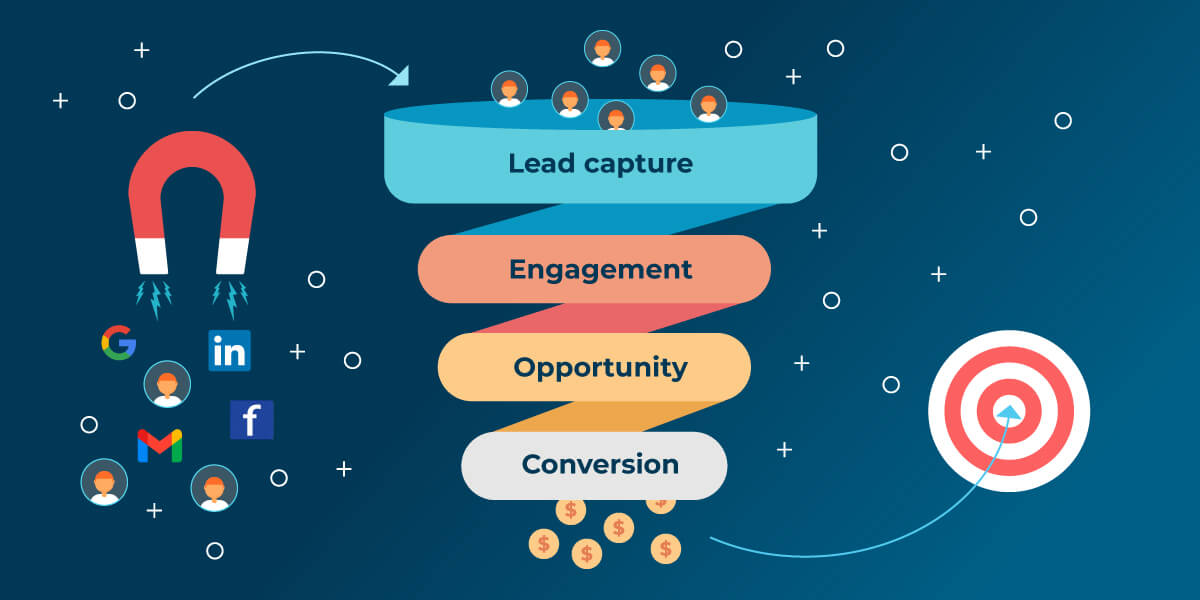Cybersecurity Triad: Understanding the Three Goals of Cybersecurity

Introduction to Cybersecurity
Are you concerned about the safety and security of your digital world? In today’s cyber landscape, protecting our data and systems has become more crucial than ever. That’s where cybersecurity comes into play. It is the armor that shields us from cyber threats and ensures a safe online environment. But have you ever wondered what exactly the three goals of cybersecurity are? Join us as we dive deep into this fascinating topic, unraveling the secrets behind the cybersecurity triad. So sit back, fasten your seatbelt, and get ready to embark on an exciting journey through the world of cybersecurity!
The Three Goals of Cybersecurity:
In order to understand the importance of cybersecurity, it is crucial to grasp its three primary goals. These goals are confidentiality, integrity, and availability. Each goal plays a unique role in safeguarding sensitive information and maintaining the overall security of digital systems.
Confidentiality focuses on ensuring that only authorized individuals have access to confidential data. It involves protecting information from unauthorized disclosure or interception by implementing measures such as encryption and access controls.
Integrity aims at preserving the accuracy and completeness of data. It prevents unauthorized modification or tampering with information during storage, transmission, or processing. By employing techniques like checksums and digital signatures, organizations can detect any alterations made to their critical data.
Availability pertains to making sure that systems and data are accessible when needed. This goal ensures that networks remain operational even during unexpected events or attacks like distributed denial-of-service (DDoS). Implementing redundancy measures, backups, and disaster recovery plans helps maintain system availability.
By understanding these three goals—confidentiality, integrity, and availability—organizations can better design their cybersecurity strategies to protect against evolving threats in today’s digital landscape. Achieving a balance between these goals is essential for effective cybersecurity practices.
How Each Goal Relates to Cybersecurity
When it comes to cybersecurity, understanding the three goals is essential to developing an effective defense strategy. Each goal plays a crucial role in safeguarding our digital world.
Confidentiality is the first goal of cybersecurity. It focuses on ensuring that sensitive information remains private and accessible only to authorized individuals or entities. By implementing encryption techniques and access controls, organizations can protect their data from unauthorized access or disclosure.
Integrity is another key goal of cybersecurity. It involves maintaining the accuracy, consistency, and reliability of data throughout its lifecycle. This means preventing any unauthorized modifications or alterations that could compromise the trustworthiness of the information. Data validation techniques, such as checksums or digital signatures, help detect any tampering attempts.
Availability is the final goal of cybersecurity. It ensures that systems and resources are accessible when needed without disruption caused by cyberattacks or technical failures. Redundancy measures like backup systems and disaster recovery plans can help mitigate potential downtime and maintain continuous availability.
These three goals are interconnected and mutually reinforcing. For example, achieving confidentiality supports integrity by limiting access to sensitive data to prevent unauthorized modifications, while availability relies on both confidentiality and integrity for secure accessibility.
By considering these goals holistically, organizations can develop comprehensive strategies that address potential vulnerabilities across all aspects of their operations, from employee training programs to network infrastructure protection.
As technology continues to advance at a rapid pace, so do the threats we face in cyberspace. Cybersecurity professionals must stay vigilant in adapting tools and strategies to counter emerging risks effectively.
Tools and Strategies for Achieving Each Goal
When it comes to achieving the three goals of cybersecurity, organizations need to utilize a variety of tools and strategies. These resources play a crucial role in safeguarding sensitive information from threats and attacks.
One such tool is encryption. By encrypting data, organizations can ensure that even if it falls into the wrong hands, it remains unreadable and unusable. Encryption algorithms scramble the data using complex mathematical equations, making it nearly impossible for unauthorized individuals to decipher.
Another important strategy is implementing strong access controls. This involves setting up permissions and restrictions on who can access certain systems or information within an organization. By enforcing strict user authentication protocols and limiting privileges based on job roles, businesses can reduce the risk of unauthorized access.
Regularly updating software and patching vulnerabilities is also critical to maintaining cybersecurity. Software updates often include security patches that address known vulnerabilities or weaknesses in programs, reducing the likelihood of exploitation by hackers.
Additionally, employing firewalls and intrusion detection systems (IDS) helps protect networks from external threats. Firewalls act as a barrier between internal networks and external sources, while IDS monitor network traffic for any suspicious activity or signs of an attack.
Education and training are equally vital components of achieving cybersecurity goals. Organizations should invest in educating their employees about best practices for online safety, recognizing phishing attempts, creating strong passwords, etc., as human error remains one of the largest contributors to successful cyberattacks.
By utilizing these tools and strategies effectively, organizations can enhance their cybersecurity posture significantly! They will be better equipped to defend against potential threats while ensuring confidential data remains secure.
Real-Life Examples of the Cybersecurity Triad in Action
1. Confidentiality:
In today’s digital world, protecting sensitive data is crucial for individuals and organizations alike. One real-life example of confidentiality in action is encryption technology. By encrypting data, it becomes unreadable to unauthorized users, ensuring that only authorized parties can access and understand the information. This is particularly important when transmitting financial or personal information over the internet.
2. Integrity:
Ensuring the integrity of data means preventing any unauthorized modifications or alterations. For instance, blockchain technology provides a prime example of how integrity can be maintained in cybersecurity. Blockchain creates a decentralized ledger where each transaction is recorded and verified by multiple participants across a network, making it extremely difficult for anyone to manipulate or tamper with the data.
3. Availability:
Having uninterrupted access to systems and resources is vital for businesses operating online. Distributed Denial of Service (DDoS) attacks are an example of cyber threats aiming to disrupt availability by overwhelming websites with massive amounts of traffic until they crash or become inaccessible to legitimate users.
These examples highlight how each goal within the cybersecurity triad plays a significant role in safeguarding our digital lives from potential threats and vulnerabilities.
By understanding these goals and implementing appropriate tools and strategies, individuals and organizations can develop robust cybersecurity measures that protect their valuable assets while maintaining trust with customers and stakeholders.
The importance of Balancing the Three Goals for Effective Cybersecurity
Maintaining effective cybersecurity requires striking a delicate balance between the three key goals: confidentiality, integrity, and availability. Each goal plays a crucial role in protecting sensitive information and ensuring the smooth operation of systems.
Confidentiality is about safeguarding data from unauthorized access or disclosure. It involves implementing strong encryption measures, access controls, and secure communication protocols. By preserving confidentiality, organizations can protect valuable information from falling into the wrong hands.
Integrity focuses on maintaining the accuracy and consistency of data throughout its lifecycle. This means ensuring that data remains unchanged and uncorrupted by unauthorized modifications or tampering. Implementing techniques like checksums, digital signatures, and transaction monitoring helps ensure that data integrity is upheld.
Availability aims to ensure that systems and resources are accessible to authorized users when needed. Downtime due to cyber attacks or technical failures can have severe consequences for businesses. By implementing robust backup solutions, redundancy measures, and disaster recovery plans, organizations can minimize disruptions caused by potential threats.
Balancing these three goals is crucial because emphasizing one over the others may lead to vulnerabilities in other areas. For example, prioritizing confidentiality without considering availability might result in excessive security measures hindering user accessibility.
Similarly, focusing solely on availability without adequately addressing confidentiality could leave sensitive information vulnerable to breaches. Striking a balance ensures comprehensive protection while enabling seamless operations within an organization’s network environment.
By understanding the importance of balancing these goals holistically rather than independently pursuing each one separately, organizations can establish more resilient cybersecurity frameworks capable of withstanding evolving threats.
Future Implications and Advancements in the Cybersecurity Triad
As technology continues to advance at a rapid pace, the world of cybersecurity is faced with new challenges and threats. The future implications of the cybersecurity triad are vast and ever-evolving. With each passing day, cybercriminals become more sophisticated in their methods, making it crucial for organizations to stay one step ahead.
One area that holds great promise for the future of cybersecurity is artificial intelligence (AI). AI has the potential to revolutionize how we detect and respond to security breaches. By analyzing large amounts of data in real-time, AI can identify patterns and anomalies that human analysts might miss. This proactive approach allows organizations to thwart attacks before they even occur.
Another significant advancement on the horizon is quantum computing. While this technology offers immense computational power, it also poses a threat to the traditional cryptographic algorithms used in cybersecurity. As quantum computers become more prevalent, new encryption methods will need to be developed to ensure data remains secure.
The Internet of Things (IoT) also presents both opportunities and challenges for cybersecurity. With billions of connected devices worldwide, securing this vast network becomes paramount. Future advancements may focus on developing robust authentication protocols and implementing stronger encryption standards for IoT devices.
Additionally, as cloud computing becomes increasingly prevalent, there will be a greater emphasis on cloud security measures. Organizations must ensure that their sensitive data stored in the cloud remains protected from unauthorized access or breaches.
Staying ahead in the constantly evolving landscape of cybersecurity requires continuous innovation and adaptation. The future holds exciting possibilities for advancements such as AI-driven threat detection systems, quantum-resistant cryptography techniques, enhanced IoT security protocols, and improved cloud security measures.
By embracing these advancements while maintaining a balanced approach towards confidentiality,integrity,and availability,the three goals of cybersecurity can be achieved and effectively protected against emerging threats
Conclusion
In today’s digital age, cybersecurity plays a critical role in safeguarding our sensitive information and protecting us from cyber threats. The three goals of cybersecurity—confidentiality, integrity, and availability—form the foundation of an effective security strategy.
Confidentiality ensures that only authorized individuals have access to data and information. It prevents unauthorized disclosure or exposure of sensitive data, such as personal or financial information. Organizations can achieve confidentiality through encryption technologies, secure authentication processes, and strict access controls.
Integrity focuses on maintaining the accuracy and reliability of data throughout its lifecycle. It involves preventing unauthorized modification or alteration of data by ensuring that it remains complete and uncorrupted. Techniques like checksums, digital signatures, and secure backup systems help ensure the integrity of data.
Availability refers to making sure that resources are accessible when needed. This goal aims to prevent disruptions caused by system failures or attacks that could result in downtime or service outages. Implementing redundancy measures like backups and failover systems helps maintain availability even during unexpected events.
It is crucial for organizations to strike a balance between these three goals to achieve effective cybersecurity. While focusing solely on one goal may leave vulnerabilities in other areas, considering all three aspects together creates a robust security framework.









